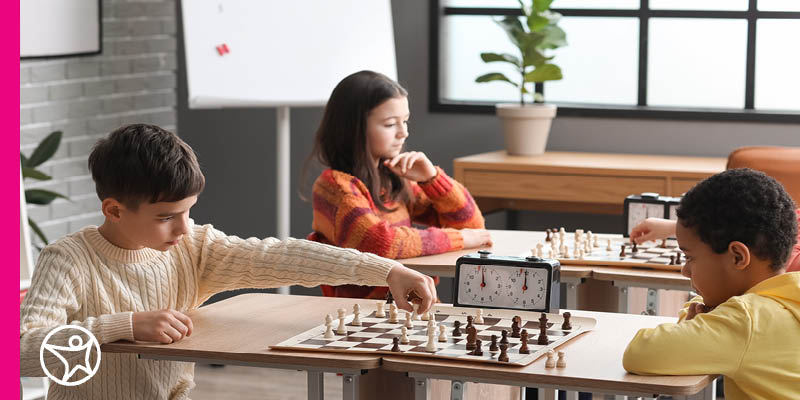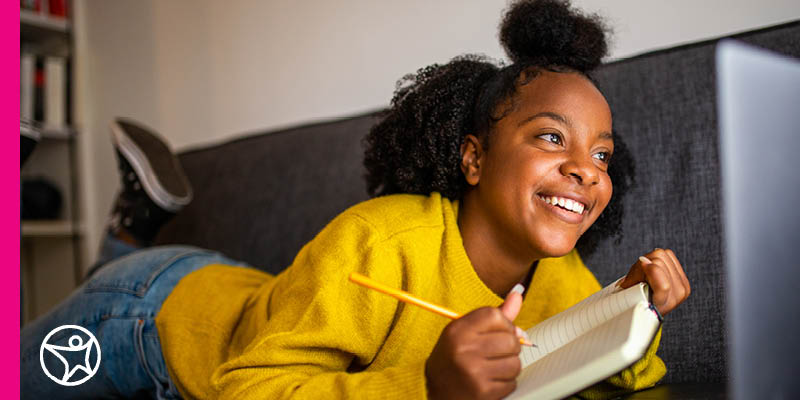Managing Overcommitment & Burnout for Kids
byConnections Academy
6 min to read
This article was originally published May 2024 and has been updated January 2025.
Students have more opportunities than ever to explore life, hobbies, and passions both in and out of school, and many students try to balance these with academic commitments while also keeping up with sports, friends, jobs, volunteering, and family obligations. While these activities may be fun, fulfilling, and even admirable, taking on too many can lead to overcommitment, burnout, and even underperforming academically.
It isn’t always easy to realize when students are stretched too thin or to help them reprioritize their schedule into something more manageable.
Common Symptoms of Burnout & Overcommitment
Burnout due to overcommitment is associated with several warning signs, according to the National Institute of Health. Here are some common ones:
1. Experiencing Anxiety
When there’s always another task hanging over their heads, students can experience anxiety and depression. Research from the National Institutes of Health backs this up. In a recent study, anxiety and depression symptoms were found to be “positively correlated with academic burnout.”
2. Feeling Exhausted
Exhaustion is one of the top warning symptoms of burnout among students, according to the Maslach Burnout Inventory: Student Survey (MBI-SS). This survey found that exhaustion can manifest in three ways:
- Physical fatigue, drowsiness, difficulty waking up, or difficulty falling asleep
- Emotional feelings or expressions of overwhelm, apathy, or inability to cope with academic or personal challenges
- Cognitive struggles with concentration, memory, and decision-making
3. Procrastinating
If your student is missing deadlines, then it may be because they do not have enough room in their schedule to finish their work on time. Missed deadlines can result in even more work for your student as they try to catch up, which can increase feelings of anxiety and of being overwhelmed. This can also put your student at a higher risk of missing even more deadlines and getting caught in an unhealthy and unproductive cycle.
4. Underperforming at School
Too many obligations both in and out of school can spread a student’s time too thin for quality study sessions and ultimately cause their academic performance to suffer.
5. Missing Deadlines
If your student is missing deadlines, then it may be because they simply don’t have enough time in their schedule to finish their work. Missed deadlines can result in even more work for your student as they try to catch up, which can further increase anxiety and feeling overwhelmed. This can also put your student at a higher risk of missing even more deadlines and getting caught in an unhealthy and unproductive cycle.
6. Having No Time to Relax
Being overcommitted often means that a student’s schedule is jam-packed, so there’s little room for spontaneity. Spontaneity and fun are necessary for kids’ happiness and for helping them grow into adaptable adults.

How to Recover from Burnout
If your student realizes they are overcommitted and burned out, you can help them learn how to recover from burnout by creating a healthier and more balanced lifestyle.
Prioritize
Students may have difficulty prioritizing their commitments and responsibilities. It’s a difficult skill to learn! Yet, prioritizing will help your student identify what they value most, what they need to keep doing to fulfill their goals, and what they may be okay with stopping.
Try using the Eisenhower Matrix to help your student identify what is urgent and important versus what is not.
Estimate the Time and Energy Commitments Take
It’s easy to underestimate how much time and energy a task like homework will really take to complete. For example, they may think that their homework will take thirty minutes to complete, but it really will take an hour to finish. To help your student understand what they can realistically accomplish in a normal day, list all their commitments along with their estimate for how much time each one takes per week. Then, ask them to track the time they spend in total on all activities related to the commitments.
Make an Activity Chart
In an activity chart, your student can write the days of the week at the top of each column and record the time it takes to go to school, study, and spend time with friends and family to help your student visualize what time is already taken up by the things they must do during their day.
Then have them write down each activity they want to do like sports, hobbies, or after school activities along with their time estimates. Where your student has free space on their activity chart, fill in the activity they would like to keep or start doing. Don’t forget to add time for preparing and traveling to activities.
It can be a difficult process to track your student’s time and block out their days by the hour, but setting realistic expectations for themselves and the whole family can help your child learn critical time management skills and help set realistic expectations.
Set Boundaries
Learning how to set boundaries on their time and say “no” can be difficult for kids, especially when they fear that they are missing out.
Kids may feel the pressure to join a club or activity that they may not have time or mental space for because their friends are there, family pressure, or because they feel like this activity will look good on their job or college applications.
If you student does not know how to set boundaries around their time, one of the best ways to start instilling that skill is to listen to them. While it can be difficult for your student to open up to you sometimes, by listening carefully and giving them an open and judgement-free space to air their feelings you can help them consider whether it makes sense to compromise on what activities they can realistically fit in a day.
Overcommitting to academic and extracurricular activities rarely yields positive results for students. Keep an open dialogue with your student about their commitments—what fits in with their dreams, what they have time for, and what they may have to let go
Interested in exploring whether online school is a good fit for your student’s lifestyle? Check out the Connection’s Academy eGuide and learn how online school works.



